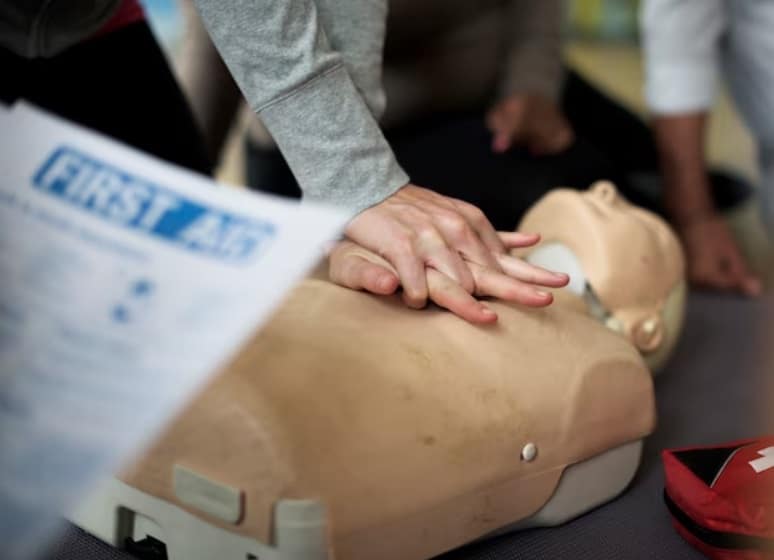Cardiopulmonary Resuscitation, commonly known as CPR, is a life-saving technique that can make the critical difference between life and death in an emergency. It is a simple yet powerful skill that anyone can learn, and CPR certification ensures that individuals are equipped to respond effectively when faced with cardiac emergencies. In this article, we will demystify CPR certification, exploring what it entails, why it’s essential, and how it empowers ordinary people to become lifesavers.
Understanding CPR:
CPR is a combination of chest compressions and rescue breaths designed to maintain blood circulation and oxygenation when a person’s heart and breathing have stopped. The primary goal of CPR is to buy time until professional medical help arrives. The American Heart Association (AHA) and other organizations have established guidelines for performing CPR, emphasizing the importance of quick and decisive action.
The Importance of CPR Certification:
CPR certification is more than just a piece of paper; it is a commitment to being a responsible and capable member of the community. The certification process involves comprehensive training in CPR techniques, AED (Automated External Defibrillator) usage, and basic first aid. This knowledge is not only valuable in emergencies but also contributes to a safer and more prepared society.
Certification programs are typically conducted by reputable organizations such as the American Red Cross, the American Heart Association, and other recognized entities. These programs ensure that participants understand the correct techniques for administering CPR, the signs of cardiac arrest, and the proper use of an AED. Additionally, CPR certification often includes training on responding to choking incidents, providing basic wound care, and understanding the importance of early intervention.
Who Should Get CPR Certified?
Contrary to popular belief, CPR certification is not limited to healthcare professionals. While healthcare workers are required to maintain current CPR certifications as part of their job requirements, CPR training is beneficial for individuals from all walks of life. Teachers, parents, office workers, and anyone interested in being a responsible citizen can benefit from CPR certification.
Consider this: cardiac arrest can happen anywhere, at any time. It could be a colleague at work, a family member at home, or a stranger on the street. Being CPR certified means you are prepared to act swiftly and confidently in any of these situations. Moreover, as communities become more health-conscious, having a significant number of CPR-certified individuals can create a network of potential lifesavers.
The Certification Process:
The process of obtaining CPR certification is designed to be accessible and straightforward. Typically, certification classes are offered in person and online. In-person classes often involve hands-on training with mannequins to simulate real-life scenarios, allowing participants to practice chest compressions and rescue breaths under the guidance of certified instructors.
Online certification programs offer flexibility for those with busy schedules. These courses typically include instructional videos, interactive modules, and assessments to ensure participants grasp the essential concepts of CPR. However, it’s crucial to choose a reputable organization for online training to ensure the content aligns with recognized guidelines.
To ensure the authenticity and validity of CPR certifications, individuals can utilize online resources such as CPR First Aid certification lookup tools provided by reputable organizations. These tools allow individuals, employers, or anyone interested to verify and confirm the certification status of individuals claiming to be CPR-certified. It adds an extra layer of assurance and accountability to the certification process.
Keeping Certification Current:
CPR guidelines and techniques may evolve, so certified individuals need to stay informed and updated. Most CPR certifications are valid for two years, after which a refresher course is required. This ensures that individuals remain proficient in the latest techniques and protocols.
Keeping CPR certification current is not only a personal responsibility but also a commitment to being an effective first responder. It’s a small investment of time and effort that can yield immeasurable returns in terms of potentially saving lives.
Building a Culture of Preparedness:
CPR certification goes beyond individual preparedness; it contributes to building a culture of preparedness within communities. When more people are trained in CPR, the likelihood of a positive outcome in emergency situations significantly increases. This collective preparedness creates safer environments and fosters a sense of communal responsibility.
Communities with a high prevalence of CPR-certified individuals are better equipped to respond to sudden cardiac emergencies, creating a safety net that can mean the difference between life and death. Schools, workplaces, and community organizations can play a pivotal role in promoting CPR certification and ensuring a widespread understanding of basic life-saving techniques.
Conclusion:
CPR certification is not just a skill; it’s a lifeline that empowers individuals to take immediate action in the face of a cardiac emergency. By demystifying CPR certification, understanding its importance, and recognizing its broad applicability, we can encourage more people to become certified and contribute to a society that is prepared to save lives. Whether you’re a parent, a student, or a professional, obtaining CPR certification is a tangible way to make a positive impact on the well-being of those around you. It’s time to embrace the responsibility and privilege of being a potential lifesaver – because you never know when those life-saving skills might be needed.
